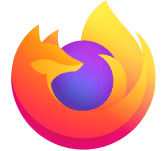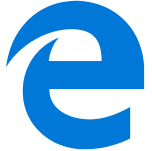Fill out the form to get more information about the Fullstack Academy bootcamp of your choice.
11.13.2023
Indigenous American Innovators Who Broke Down Barriers in Tech
By The Fullstack Academy Team

Throughout history, Indigenous American innovators have been behind many well-known inventions, like kayaks, baby bottles, and syringes, that are still widely used today. Despite the significant contributions of Indigenous Americans, the population is vastly underrepresented in the workforce, particularly in tech.
In a recent report by the Kapor Center, a social justice organization, Indigenous Americans represented less than 4% of technical roles at five of the largest U.S.-based tech companies. Improving representation in tech starts with recognizing the long list of contributions from indigenous tech pioneers. Here are just a few of the groundbreaking Indigenous American innovators who have made major contributions to the tech industry.
Mary G. Ross: First Known Indigenous Female Engineer
A lifelong advocate for women and Indigenous Americans in tech, Mary G. Ross broke barriers as the first known Indigenous female engineer. After earning her bachelor’s in mathematics at 16 from Northeastern State Teachers College in Tahlequah, Oklahoma, Ross spent nearly a decade teaching science and math in public schools.
During World War II, many women began working in roles that men traditionally held, and Ross was among them. Lockheed Aircraft Corporation hired her to help design fighter jets and large planes. While at Lockheed, she attended the University of California Los Angeles, where she earned her professional engineering certification. She was also a founding engineer of Lockheed's secret Advanced Development Program and the only woman on the team besides the secretary.
Outside of work, Ross supported the National Museum of the American Indian in Washington, DC, was a charter member of the Los Angeles chapter of the Society of Women Engineers, and was active in the American Indian Science and Engineering Society.
Thomas David Petite: Inventor
Inventor Thomas David Petite holds over 100 patents for wireless networking technologies that empower mobile devices to work and helped lay the foundation for the Internet of Things (IoT). Some of his inventions aided in developing the “Smart Grid,” which allows multiple devices over a shared network.
Throughout his career, Petite founded several companies, including StatSignal Systems and the Smart IP Company (SIPCO). He was also an advocate for fellow Indigenous American inventors as the founder of the Native American Intellectual Property Enterprise Council (NAIPEC). The council helps support Indigenous inventors by assisting with patents, copyrights, and trademarks.
Fred Begay: First Indigenous American to Earn a Ph.D. in Physics
Throughout his career, Fred Begay overcame many challenges to become the first Indigenous American to get his Ph.D. in physics. Begay enlisted in the United States Air Force in 1951 and was stationed in Korea at the end of the Korean War. After returning home, Begay started a farm, but his career path quickly changed when the Navajo Nation began recruiting veterans to attend college.
Begay spoke very little English and didn’t possess the same level of education as his classmates. Despite these challenges, Begay worked tirelessly to catch up and earn his bachelor of science in math and science, master of science in physics, and Ph.D. in nuclear physics from the University of New Mexico. During his studies, Begay studied the origin of high-energy gamma rays and solar neutrons through a research team funded by NASA.
Outside of his professional career, Begay gave back to the Navajo community and supported Indigenous Americans in science and technology. He served as President of the Seaborg Hall of Science, a non-profit research and education institution.
Nicole Aunapu Mann: First Indigenous Woman to Go to Space
Selected to join NASA in June 2013, Nicole Aunapu Mann was the first indigenous woman to go to space. She was commander of NASA’s SpaceX Crew-5 mission that launched to the International Space Station (ISS) on October 5, 2022. Over six months, the crew conducted experiments and demonstrations that helped prepare for further human space exploration beyond low-Earth orbit. During that mission, Mann conducted two spacewalks totaling over 14 hours to perform upgrades to the ISS solar arrays.
Before her mission to the ISS, she was a Safety and Training Officer and the Assistant to the Chief of Astronaut for Exploration. She led the astronaut corps with the development of critical NASA technologies, including the Orion spacecraft, Space Launch System, and Exploration Ground Systems for moon missions.
Increasing Diversity In Tech
The indigenous community has made significant contributions to the tech industry. However, many of these stories remain untold due to the lack of representation and diversity within the tech industry and beyond. Prioritizing diversity in the tech sector is crucial as it helps to bring in new ideas and viewpoints, promoting more innovation and solutions.
Accessible tech education is a critical component for increasing the representation of marginalized groups. At Fullstack Academy tech bootcamps, we are committed to making tech more accessible for those of all backgrounds and skill levels. Our immersive tech bootcamps provide you with the knowledge, skills, and confidence to see yourself in tech and find a career you’re passionate about. Explore our upcoming bootcamps and start your journey today!
Make Your Move.
Take the first step in your journey by learning more about the immersive tech bootcamps at Fullstack Academy.


